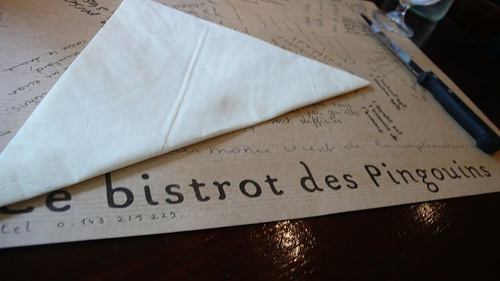Old Museum Concert Hall.
Archive for the ‘Culture’ Category
Page 3 of 12
London comedy life
JesterJester’s open-mike nights at the intimate basement home of Betsey Trotwood.
Mash-up culture
If one trope could define the full diversity of artistic endeavour in this Millenium period, it is the mash-up. For visual art, we have become used to collages of images, videos, fashion, and even material junk. Ditto for sound objects and events. In movies, Godfrey Reggio’s Koyaanisqatsi (1982) became a popular example, at least among college students. And now computer scientists are exploring mashups of programming languages, for instance, here. But not even architecture has escaped. The increasingly widespread Bauhaus-influenced style seen in new office and apartment buildings in Europe and North America these last two decades is one of life’s great pleasures of looking.
What distinguishes this architecture? The influence of Bauhaus and de Stijl ideas is evident in straight edges, flat roofs, vertical walls, and structures comprising rectangular prisms. But these are not the single-box prisms of the International Style skyscrapers of 50 years ago. Rather, each structure comprises multiple, intersecting prisms, expressing a multiplicity of interpenetrating shapes. The result is that external walls are not flat or simply lying in a single vertical plane, but extruding or withdrawing into multiple vertical planes. The effect of this interleaving mash-up is most pleasing.
Second, external surfaces are no longer a single, uniform colour or material. Typically, the different prisms, or the different interpenetrating vertical planes, will be made from different materials: red-brick, white stone or concrete, grey aluminium sheets, etc. Here, the mash-up of materials and colours is unlike most western domestic or office architecture of the past two centuries.
Here are some examples. First is the red-brick apartment building across the street in this photo, in Madison, Wisconsin (Source: via The Dish). Notice how the external walls do not all lie in the same vertical plane, and note the use of different coloured and perhaps even types of surfaces – red-brick, light-coloured brick, and grey slate. There is a white trim.
And here is the Jaclyn Building, in Sofia Bulgaria (Architects: Aedes Studio), again with red brick, grey and white surfaces, but this time less balanced vertically.
And here is an apartment building, The Reach, in Leeds Street, Liverpool, UK, with all the familiar elements along with a curved corner. The only thing lacking from this building is a single tree in green leaf right up against it, to give the image a textured asymmetry of colour and line.
London Life
Some of the crowd waiting to see Yemeni-American video stars Adam Saleh and Sheikh Akbar (aka TruestoryASA) in Hyde Park London on Sunday 3 August 2014. The stars were rescued by police. Report here.

London life
The Beats: Australian responses
An excerpt from a 1959 Australian Broadcasting Commission TV programme on the Beats, featuring interviews with Sydney University students, Clive James and Robert Hughes (pictured, image from ABC).
London life
Scooter Caffe, Lower Marsh Street, Waterloo, London SE1 7AE.
Eggs William S. Burroughs
Eggs William S. Burroughs
Chop one onion and place it into a pan with 1 tablespoon of butter. Brown it.
Take the green part of 1 chicory salad (keep the white part for a salad). Chop it fine and add it to the onion. Cover and simmer for 15 minutes. Then add 4 chopped hard-boiled eggs, 1 clove of garlic that has been crushed into a little chopped parsley, 2 chopped peeled tomatoes, 1 more tablespoon of butter, 1 teaspoon of meat stock, 1 pinch of pepper, one pinch of salt, and one sherry-glassful of claret. Cook for 5 minutes.
Boil 2 handfuls of noodles for 15 minutes. Strain. Be sure they are free of all water. Place them on the bottom of a baking dish. Cover with the chicory, etc., and bake in a preheated moderate oven of 350°F for 15 minutes. Season to taste.
Source:
Henri Charpentier [1945]: Food and Finesse: The Bride’s Bible. Privately printed, Chicago, IL, USA. Recipe here. From Charpentier’s and Burroughs’ time in Chicago, in the early 1940s.
Paris life
Badly suppressed laughter
When a group of people jointly undergo an intensely searing experience, especially one where they face a mortal enemy or opponent, a bond is created between the participants that outsiders can find hard to penetrate or even to understand. Soldiers in battle, for example, often experience this, as good novels and films have long shown.
Last night, the audience at a King’s Players’ production in London had such an experience, and we will remember for the rest of our lives the courage and fortitude, resilience and – yes, dammit! – just plain, old-fashioned grit we all showed in the face of great odds. Nobody left, nobody laughed out loud, nobody became an alcoholic, nobody set off the fire alarm to bring this cruel and unusual torment to an end. During the quiet patches, those long dark nights of the soul, our focus on survival was so intense that the only sound you could hear was the swiveling of eyes.
Our first enemy was the play itself, Trojan Barbie, by Christine Evans. What an appalling piece of radfem agitprop! The writing is surely a parody of feminism, not intended to be serious, written as if by a teenager discovering poetry for the first time. The male characters are all evil rapists and thugs, and the women are either harlots or mad. Even the everywoman character Lotte is dotty. Not a single character appears real or embodied, a normal human being. No one grapples with the actual moral dilemmas of war, no one weighs pros and cons of different courses of action, not even in dialogue with one another. What plot there is is too ridiculous to be described, but involves unexplained time travel between ancient Troy and the present-day, with scenes set in doll repair shops, Mediterranean street cafes, refugee camps, battlefields, and the odd zoo. You couldn’t make it up if you tried.
Our second enemy, colluding with the first, were the cast and crew. Given the flaws of the script, one can only sympathize with actors having to make something of this. But why would anyone even try? Life is too short to waste it on such dross. And if, for some reason, you had to try, why not do it well? Why act badly? Why run around like a horse? Why impersonate Che Guevara and Zsa Zsa Gabor? Honestly, the only person missing from the production was Carmen Miranda with her hat made of fruit – although, there was in fact a samba. What was that doing there?
And the set! It included the world’s largest collection of Barbie Dolls, a massive pink cellophone heart, and the odd tiger. What normal person could possibly imagine that a large stuffed animal, a children’s toy, would convince us we are in a zoo? At first I thought it was intended as a visual metaphor for something else, something profound, perhaps a subtle reference to well-known war poet William Blake. (“Tyger! Tyger! Burning bright, In the forests of the Night.”) But No: the stuffed tiger behind a cage on stage was intended to be what it was: a tiger in a zoo. It roared through the sound-system, and it magically moved between scenes, sometimes lolling this way, and sometimes that. I have to say its acting was perhaps the most realistic of the evening, and I’m sure the tiger’s agent will be fielding many calls this morning.
No one would be converted to the merits of feminism by seeing this play, and lots of people would be deconverted. But that’s the usual way with agitprop: if you preach only to the choir, you lose the rest of the congregation. But of course, as with all agitprop, the preaching is not aimed at converting anyone, it’s aimed at making the preachers feel good about themselves. Shame about the poor audience, but.
However, we did make it through, we survived to the end without a single casualty. True, we lost two hours of our life that will never be regained. But we saw what we were all capable of under extreme pressure, we showed grace under fire, and we stood by each other right to the end. Being under fire together has made us life-long comrades, and at the annual reunions we survivors will no doubt tell and retell our stories of the time we fought Trojan Barbie, like the Band of Brothers that we now are.
Message to Homer: Your position as Trojan War historian is safe. No need to call your office.
PS (2014-04-06): Another review is here. “The stuffed animal representing the tiger was a bit unnecessary”


